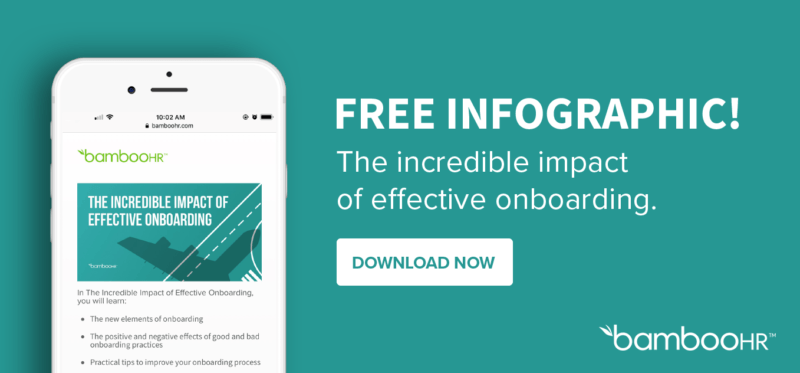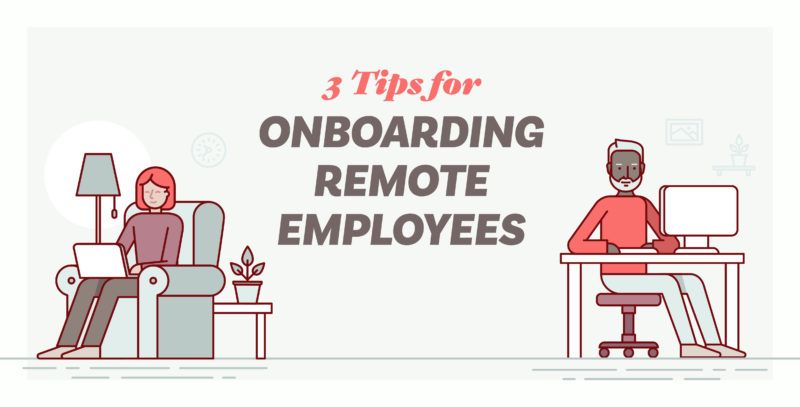How Long Should Onboarding Take? (10 Factors to Consider)
If onboarding processes are an afterthought for your company, you may want to reconsider your priorities.
The Boston Consulting Group conducted a study finding that out of 22 HR practices, onboarding is the second most influential when it comes to employee experience. Companies with great onboarding procedures achieve 2.5 times more revenue growth and 1.9 times the profit margin of companies with poor onboarding strategies. If that’s not enough motivation, poor onboarding also results in high employee turnover and reduced employee productivity.
Developing an effective onboarding strategy takes time, but keeping amazing hires on your team is worth the effort. Here are ten factors to consider when determining how long onboarding should take in your organization.
1. Employee Retention and Onboarding
The length of your onboarding program can significantly impact how long your employees stay with your company. Our 2014 study on onboarding found that 31 percent of employees left a job within six months of starting, and 68 percent of those left within the first three months. Poor onboarding was a major factor in their decision to leave; a total of 23 percent of employees cited leaving because they wanted clearer responsibility guidelines and 21 percent because they wanted more effective training.
While the high financial cost of employee turnover is well-known, you may not realize how turnover affects your employees’ environment. Employees that aren’t engaged and have one foot out the door are not only less productive, but they can also hurt the productivity of those around them. Unhappy, disengaged employees can create a negative and toxic work environment for everyone.
2. Onboarding Time
The general consensus among HR professionals is that onboarding should take at least three months. However, research suggests companies can increase employee retention by extending onboarding throughout an employee’s entire first year. Creating a more robust onboarding program that extends throughout an employee’s first year helps employees become more productive, feel comfortable in their work environment, learn where to go when they have questions, adapt to the company culture, and build better employee relationships.
Although most HR professionals understand the need for extended onboarding, a CareerBuilder survey found that two-thirds of hiring managers and HR professionals spend less than a month onboarding new employees. Half of the respondents said they only spend a week or less on onboarding. Pushing people through paperwork and training so they can start work sooner may not be the ultimate path to employee productivity and contribution.
3. Additional Information
Lengthening your onboarding time gives you the opportunity to incorporate more information into the onboarding process. A structured onboarding process that provides additional information and training to your employees throughout their first year can improve employee retention by 25 percent.
When you confine training to a new hire’s first week or month alone, you could overload them with information; however, by extending the onboarding process, employees are more likely to retain the information they learn. Break up the information into bite-sized pieces and your new employees will have an easier job getting it all down (not to mention they won’t feel like their brains are going to explode).
4. Higher-Level Learning
Additional time in the onboarding process also allows for higher-level learning. Because employees have more time to absorb basic information, there are greater opportunities to help them build more advanced skills throughout their first year. Don’t stop training them once they seem proficient with the bare minimum.
Providing continuing education throughout the first year of employment allows employees to advance their skills and better benefit your organization. Focused training on both soft and technical skills gives employees more advancement opportunities and provides them with a career path and a vision for the future.
5. Relational Onboarding
The onboarding process shouldn’t be seen as a simple transactional relationship of filling out paperwork and reading the employee handbook. Relational onboarding means nurturing and welcoming new employees so they can perform their best and providing new employees with support, clearly defined responsibilities, and set expectations for their new position. Assisting new employees in building solid relationships with their coworkers and managers can help new employees more quickly adapt to your organization’s culture and speed up their learning process.
6. Collaborative Learning
Employees shouldn’t have to go through the onboarding process alone. Collaborative learning provides an immersive learning experience and allows employees to bond with their colleagues, share experiences, and better understand their role in the company. Employees glean the majority of their work-related knowledge from colleagues, so collaborative learning gives them the opportunity to learn from others who have more experience and improve their skills as a result. You can create collaborative learning opportunities by onboarding batches of new employees together and including current employees from various departments in the onboarding process.
7. Video Learning
Another great resource for onboarding employees is video. Videos can help streamline the onboarding process and provide a more engaging employee experience than flipping through handbooks. Video also promotes social and formal learning and is a cost-effective way for companies to onboard employees.
At BambooHR, we use videos during the onboarding process to teach employees about our IT security policies. It can be easy for employees to zone out in the face of all the IT jargon, so our short, quirky videos keep new hires interested and help important information stick.
8. Technology for Onboarding
With today’s ever-changing tech environment, getting employees to a place of productivity can be done faster through automated software tutorials and onboarding prompts. Companies like WalkMe create digital adoption platforms (DAP) that give employees step-by-step guidance on how to use new software. Platforms like this make it so no valuable time is wasted on system training. This can help speed up an employee’s time to productivity and reduce downtime.
Technology can also be used to reduce the amount of time spent with transactional onboarding procedures such as paperwork, granting permissions, opening accounts, and more. However, you still need a structured onboarding program that engages employees with their new work environment and colleagues. Use technology as a tool—not as a replacement for an in-person onboarding process.
9. Onboarding for Internal Transfers
Onboarding isn’t just for external hires. Transitioning internal employees into a new role within the company is just as important as onboarding a new employee. Depending on your company, the culture of one department may be significantly different than that of another. Transferred employees don’t want to feel like a newbie in an organization they’ve worked at for years. Have a process in place to give your internal hires the training, feedback, and socialization they need to be successful.
10. Employee Engagement
Our final consideration is probably the most important. Companies that see onboarding as a transactional process and fail to connect employees to the business won’t engage their hearts and minds. However, when employees feel fully engaged with their organization they enjoy their jobs, are committed to their company, and put greater effort into their work. Enthusiastic employees are more productive and create a great work environment for everyone involved.
Tailor Your Onboarding to Your Industry
Some companies, like WalkMe, have a different take on how long onboarding should take. They say the rapidly changing nature of the tech industry makes it harder to minimize new-hire downtime. And say the intensely competitive nature of the tech industry means companies should get employees through orientation and to productivity as quickly and efficiently as possible. While faster onboarding may give tech companies a competitive advantage, research suggests employees benefit from longer, structured onboarding processes. Knowing how long onboarding should take helps you give your employees a supportive onboarding experience, saves money from turnover costs, and builds a happy and productive employee environment. For additional help with onboarding, check out our handy guide to onboarding new employees.
Get caught up every month on all things HR. Don't worry, we promise we won't spam you.
Darren Perucci is a content manager for BambooHR. He likes to think of himself as a purveyor of all things content related. While he loves finding new ways of reaching new audiences he is passionate about delivering the best experience to readers.











